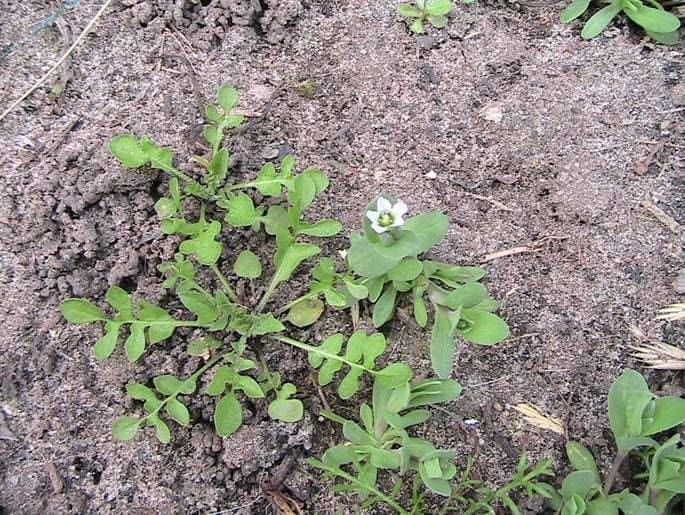Herbs of herbaceous plants

The dropship is a perennial herbaceous plant. Leaves oblong-ovate, obtuse. The flower rings are brought together in a dense, spiky inflorescence. Corolla is two-sided, purple.
It grows in forests, bushes, meadows.
It is a kind elderly melliferous, blossoms from June to September. Bees willingly visit her flowers, especially in hot weather. One flower is alive for two days, after a day it releases 0.2 mg of sugar in nectar. Medoproduktivnost 1 hectare in recalculation on a continuous coating is close to 80 kg.
Ivan-tea is narrow-leaved – a tall herbaceous plant. The leaves are red. Petals purple-red, less often pale pink or white, with a narrowed base. The flowers are a bit wrong, in long hands. Fruit is a pod-like box. Seeds are small, with long white hairs.
It grows in light forests, especially on logging, fringes, bushes.
Ivan-tea begins to blossom in the third decade of June and ends after 50 days – in the second decade of August. Its flower secrete 0.42 mg of sugar in nectar, while the honey productivity of 1 hectare with a continuous coating is 300 kg.
It is a honey plant that can produce commodity honey. However, the nectarization of ivan-tea is highly dependent on climatic conditions. For favorable weather, commodity honey is obtained, which has a tender sweet taste, a weak flower smell and a light amber color.
Deaf nettle white is a perennial herbaceous plant with a family of labial flowers. The leaves are cuttings, ovoid, with a cordate base and a sharpened tip. The flowers are gathered in thick rings. Corolla white, bilabial. Quite common. Very kind elderly melliferous.
Blooms from the second half of May. Bees intensively visit her flowers, collecting nectar and pollen. One flower functions for two days, an average of 0.5 mg of sugar in nectar per day. Medoproduktivnost 1 hectare of continuous coating – 80 kg.
Oregano
Blooms from July to August for a month. Together with other plants, honey bees are provided to bees. One inflorescence isolates up to 1.08 mg of sugar in nectar, honey production of 1 hectare of continuous herbage – close, 100 kg.
Meduchnitsa is a medicinal plant – a perennial, rhizome, herbaceous plant. The basal leaves are lanceolate, to the base gradually narrowed into winged cuttings, to the uppermost ones.
Flowers on short legs, collected by scutes on the ends of the stems. Corolla first red, then bluish. It grows in forests, bushes. Blooms from April to the end of May. This is one of the earliest honey plants that gives bees nectar and pollen. The flower secrete 0.40-0.45 mg of sugar in nectar every other day. With a continuous coating honey production of 1 hectare is 35-40 kg. Provides bees with a supported honey for spring build-up.
Blackberry is common, sizaya is a bush from a pink family. Shoots cylindrical, with a blue touch, covered with strong spines. Leaflets on annual shoots are mostly bright green. Leaflets egg-shaped. Flowers are collected in the apical brush, white corolla.
Fruits – numerous black, covered with a gray povolokoy. It grows in forests, ravines, on the banks of rivers, in gardens and parks. Blackberries blossom throughout the summer, since the second half of May it is considered a good honey, as it gives bees nectar and pollen for a long time. Where it forms continuous thickets, it is possible to receive from it commodity medosbor. One flower excretes 0.38-0.40 mg of sugar in nectar, and honey production of 1 ha is 35 kg. Honey with blackberries without color, with a pleasant faint fragrance.
Huller Huller – a lot of annual herbaceous plant with a family of poppies. The stem is simple, the tuber is flattened and spherical. Leaf 2-3, bluish. Flowers in many-flowered, erect brushes. Upper petal with shporkoy. Fruit is an oblong boll.
Khokhlatka is a good early honey plant. Blossoms in late April in early May, when there are still few flowering plants. Therefore, the bees, taken out in the spring to the forest, well attend the flowers of the crimson, collecting nectar from them, pollen and building up the strength of the families. One flower on average secures 0,26-0,30 mg of sugar in nectar, and honey productivity of 1 hectare of continuous herbage of the hood is 45-50 kg.
Blueberry is a bush from the family of cowberry. Flowers on short pedicels, which go out on one of the leaf sinuses. Corolla greenish-white with pink tinge, spherical, with bent teeth.
It grows in coniferous and mixed forests, sometimes in the northern part of the forest-steppe areas.
This is one of the important medonosov. Blooms at the end of the first decade of May for a half, sometimes two weeks. Bees willingly visit the flowers of blueberries, collecting nectar and pollen.
For well-prepared bee colonies with blossoming of blueberries, the main spring-summer honey crop begins.
The weaker families on blueberry honey collector develop well, are strengthened and have time to prepare for the effective use of the second half of the spring-summer honey crop.
One blueberry flower, on average, releases 0.5 mg of sugar in nectar every other day. In the forests there are areas of continuous blueberry, which sometimes occupy several dozen hectares of their honey production – 60-70 kg / ha. Bilberry honey is light, with a characteristic aroma.
Herbs of herbaceous plants

